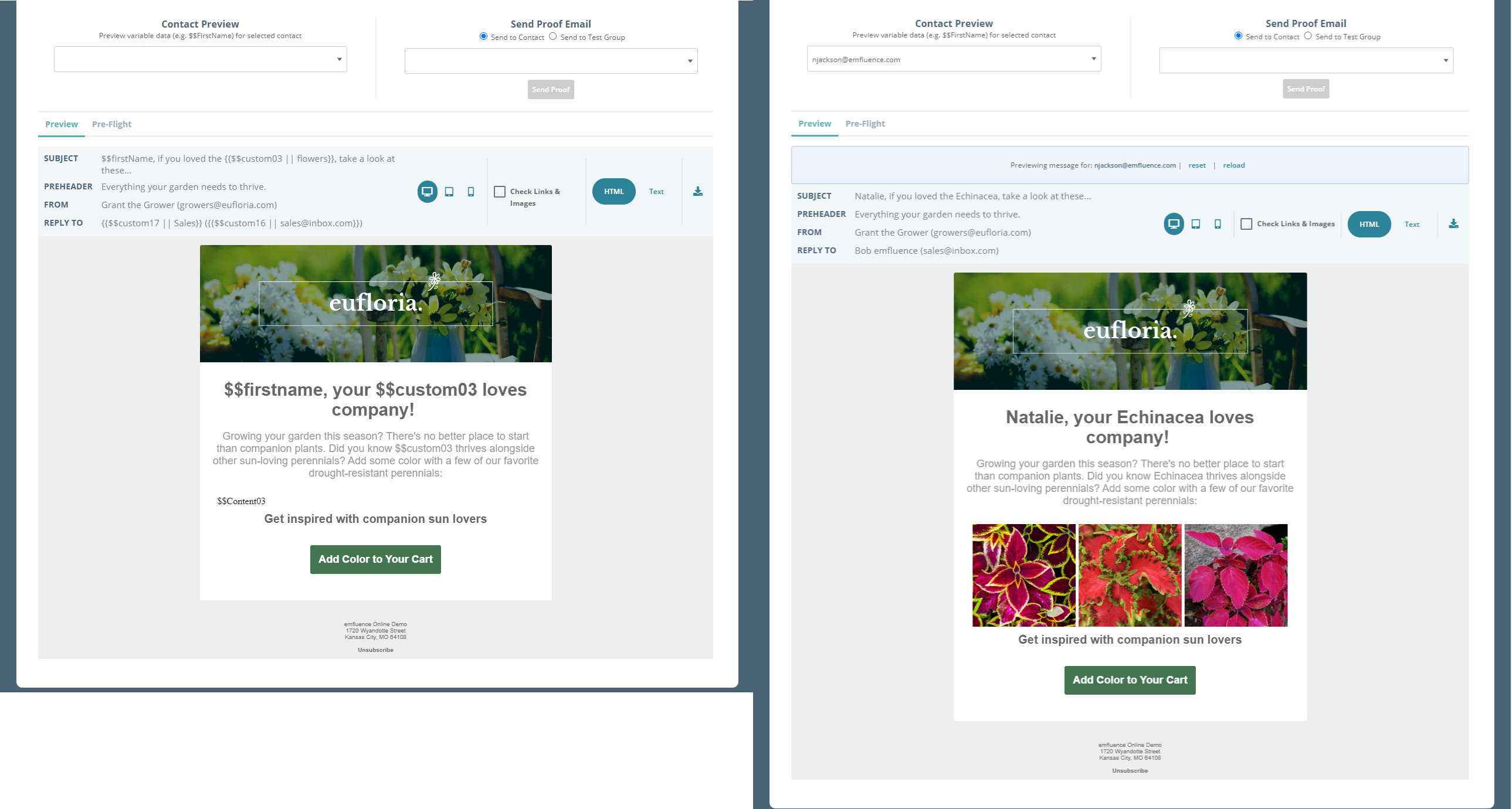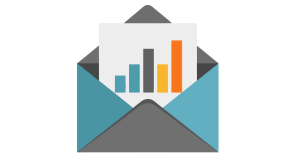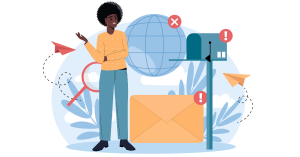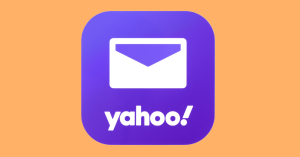Ever wish you had a time traveling DeLorean to go back and fix costly email errors? Everyone makes mistakes, but smart email teams know how to stop them from ever happening. In part two of our webinar series with our friends at Email On Acid, emfluence CEO David Cacioppo and Email On Acid’s Geoff Traub joined emfluence’s Cory LaGrange for a discussion on all the things that can go wrong with email, and how to prevent email disasters before they strike.
Disasters can strike at every point in the email process, so as a follow-up to this event, we asked Geoff and David to share their advice on how to prevent disasters depending on where you are in the email building process:
Strategic Slipups
Strategy is the foundation of your email program, and if you haven’t carefully laid out expectations, this is the first place disaster can strike. A weak strategy can lead to messages that don’t align with recipients, too many (or too few) emails, setting the wrong measurements for return on investment, and worst of all—sends to purchased lists. Fortunately, there are a few ways you can prevent strategic disasters:
- Map your customer journey. Before you plan out your email program, mapping your customer journey can help you identify what messages people should see depending on where they are in the customer journey. A mapped journey will show where triggered emails can support a sale and where timely offers can be layered in—be sure to include exceptions as well. Are there times when certain segments should be excluded from messages? Probably, and it’s worth documenting those exceptions. Need a starting place? Download our customer journey mapping worksheet here.
- Have an actionable data set. This could be a CRM, an ecommerce tool, a CDP, or maybe just a data import, but a solid email program foundation should be one based on a data set that’s more than just names and email addresses. Actionable, trustworthy data is the key to personalizing your email program!
- Monitor your integrations. Sure, integrations are usually set and forget, but sometimes technology happens. Have a regular check-in with your data integrations to make sure the data is still syncing, and that it’s syncing in the way you expect it to. This will prevent weird data syncs with broken data points in your emails. If you can preview a few data points in your email (like you can in emfluence), be sure to do so!

Email Design Disasters
Good design depends on your inbox, your audience, and your brand—but there are some failsafe tips and tricks you can apply no matter what inbox your email is likely to land in. To prevent email disasters in your creative and call-to-action, take into consideration things like the balance of image to text, length and purpose, and Outlook versus Gmail. What works well in one inbox will not work well in another, so it’s up to you to plan for your primary inbox.
- Be sincere. Pretend FWD or RE or OOPS subject lines may give you an initial lift in open rates, but you will do long-term damage to your relationship with your subscribers if you send them messages that are tricky. Be honest and sincere instead and focus on the relationship over the course of time rather than getting an open right this minute.
- Stay true to your brand. Incorporate your brand voice in your email copy, and better yet, think about how to incorporate it into your subject lines, preheader, and call-to-action copy. Just because everyone else is doing something doesn’t mean it’s the right choice for your brand, so don’t be afraid to play with the standard rules if your brand voice allows for it.
- Don’t be afraid to try new things. And test those new things against what you’ve always done. Are there creative ways to use data? Use them! Are there creative ways to show what you do rather than tell it? Try that! Even if you’re B2B, you have opportunities to be playful and fun.
Pre-Deployment Testing
The pre-deployment step of the process involves all the things you need to do and double-check before hitting “send.” NASA has a checklist it runs through before sending a shuttle into space, and your email team should have a list of checks it uses before launching every campaign.
A pre-deployment checklist should include the following items:
End-to-end content reviews
- Inbox display (subject line and pre-header text optimization).
- Accessibility (readable fonts, color contrast, links are clickable, etc.).
- Images (optimized files for fast loading).
- Spelling and grammar checks (not to mention an accidental profanity).
- Links (right destination, no 404s, tracking codes in place).
Deliverability
- Run tests against spam filters.
- Check for domain blocklisting.
Email Previews
- See how your email looks on different email clients and devices.
Rendering issues are one of the biggest headaches for email developers. Email previews are an excellent way to see into the future and understand how subscribers will experience your campaigns. But they should be the last step of pre-send email testing, and they won’t show you everything. For example, a screenshot of your email in Outlook won’t show you how the subject line looks in the inbox, alert you to a broken link, or tell you if you’re likely to end up in the spam folder.
Every email marketer has dealt with Send Button Anxiety. That’s because mistakes and poorly rendered emails can cost a brand big bucks! A campaign that looks horrible in Gmail could mean a huge portion of your list never sees the email. But pre-deployment testing puts an end to that, which is why emfluence uses features from Email on Acid in our marketing platform.
A/B Testing Takedowns
Testing can be problematic if you don’t have a plan in place as to what you want to test, how you’re going to test it, and how you’re going to interpret the results. One of the biggest problems we see? Too small test lists. Our emfluence team recommends a minimum list size in each test group of 1,000 recipients for valid results. Anything else will be too small to tell the true story of your results. And don’t forget to test against variables outside of your marketing automation platform as well!
- Don’t test once. Have a testing plan that evaluates how your audience engages over time. For example, is a certain time of year better for certain message types? Test that! Did the subject line that worked really well in 2018 hold up last year? Test that, too!
- Run tests in conjunction with other channels. What happens if test group A has display ads running to it? Is test group B more likely to convert if they receive a direct mail piece or met you at a trade show? Take into consideration things happening outside of your email ecosystem and how they might impact your engagement.
- Analyze results against other customer data, like RFM. Did better customers respond differently to your test than others? Thinking about customer data as part of your testing scenario can help you drill down on offers and lifetime value.
Deployment
Once you hit send, you’ve reached the point of no return. Email disasters can strike here, too, so be mindful of these tips:
- Don’t send from a no-reply. Unless you really, really don’t want replies. People are going to reply, so it’s better to set up a role account that can either be automatically processed or monitored by a group. It’s not fun, but it’s important for your brand and your relationship with your subscribers.
- Prepare to be overwhelmed. What happens if your campaign is too good? That’s an amazing problem to have, and if you don’t plan for it, you could overwhelm servers or bring down your site (which would be very bad).
- Have technical monitoring in place. Lots of things can happen post deployment that can have an impact. Blocking and deferrals can kill an otherwise brilliant campaign. So can blacklist and filtering. If you don’t monitor during ands after deployment, you could be making unfair judgements about your success or lack of success.
Email Data & Insights
If the only thing you have is opens and clicks, then do the the best you can with it. But there are better, more meaningful metrics out there. Conversion is one example, but you can also look to engagement beyond the first click. Documentation let’s you fall back to your original purpose and declare victory or defeat. As you look back a year from now, will you really know what you tested, why you tested it and what you learned.
- Engagement metrics: Go beyond opens and clicks. Examine the numbers that indicate how your subscribers really feel. Who’s reading, who’s skimming, and who’s deleting your campaigns?
- Device and client analytics: Knowing how subscribers view your emails can inform list segmentation. You may want to develop a slightly different email for Gmail, Outlook, and Apple Mail users so there’s a consistent experience across clients.
Questions from the Webinar
We had so many great questions from the webinar that we thought we’d post a few here! If yours didn’t get covered, please post it in the comments below and we’ll track down an answer for you.
What are some of the best practices for dark mode?
EOA has a great resource for this: https://www.emailonacid.com/blog/article/email-marketing/dark-mode-for-emails-infographic/
We’ve been struggling with corporate branding and dark mode. What is the easiest way to work with dark mode and dark corporate colors that cannot be reversed?
We have a great post on swapping images for dark mode users (courtesy of our friends at EOA): https://emarketingplatform.com/blog/tip-of-the-month-how-to-do-a-dark-mode-email-image-swap/
I’ve heard adding a price savings or percentage off in your subject header is a no-no. IS that still the case?
Great question, and we’re seeing shifts toward engagement/sender reputation over traditional spam triggers (e.g., certain words, phrases, or symbols). Fitbit has a strong sender reputation, so this usage wouldn’t be a big hit for them.
Best fundamental tools/practices for data cleansing? Making sure the existing/incoming email addresses in CRM are real and true and working?
At emfluence, we recommend quarterly list cleanses, with at least one a year. B2B lists, for example, tend to lose 25% of subscribers each year (due to things like changes in job, retirement, etc.)


